Best lunchbox amps 2025: killer portable amps for gigging
Offering big sound in a portable package, these compact amplifiers are perfect for the live circuit
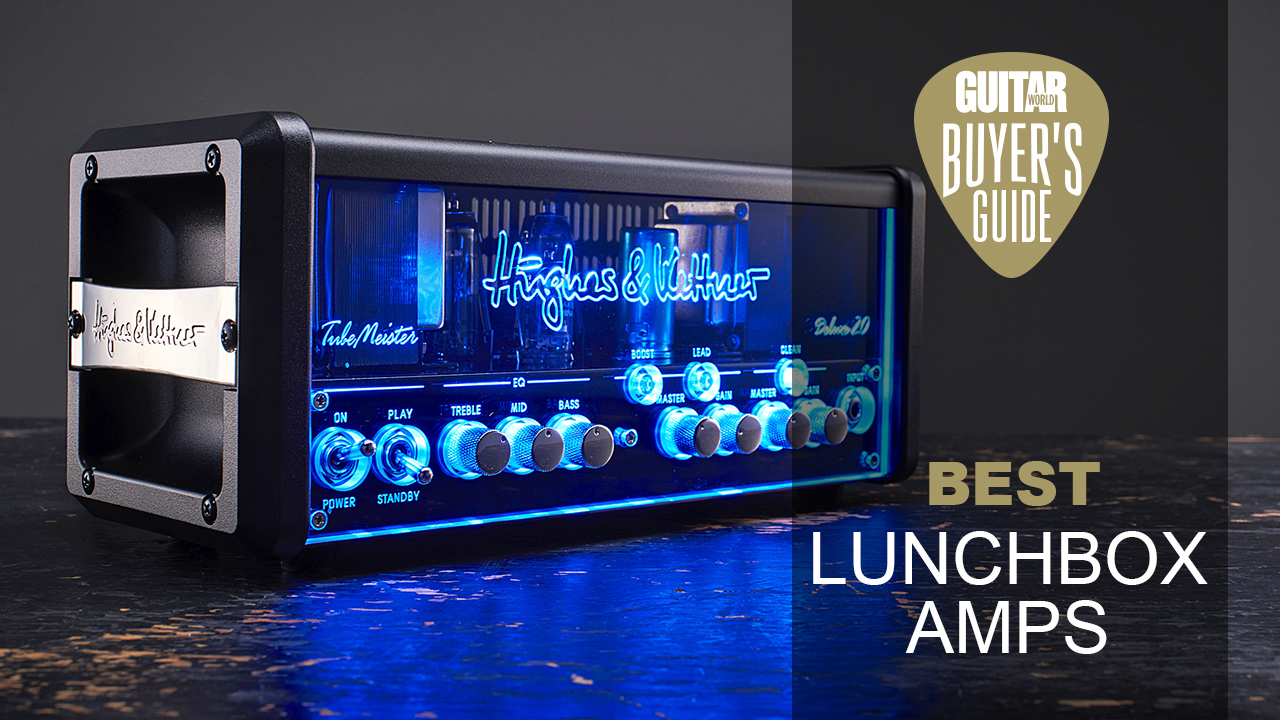
With the return of live music this year, guitarists everywhere are no doubt looking to get their rigs in order – and, of course, one of their key considerations will be which guitar amp to use. While many players will be content with hooking up to a house backline (if there’s one available), others will want to ensure that they can bring their own unique tone to their gigs. If you’re in the latter camp and you’re in the market for some new equipment, maybe it’s time to check out some of the best lunchbox amps.
As the name suggests, lunchbox amps are lightweight and transportable, though they should definitely not be thought of as lesser versions of your typical amp heads. These amps pack a punch and sound great – so much so that they are rapidly becoming the gigging guitarist’s preferred option.
Best lunchbox amps: Guitar World’s choice
Choosing the best lunchbox amp overall was never going to be easy with such a huge range available. After careful consideration, we plumped for the two that we felt represented the best value for money: the Hughes & Kettner TubeMeister Deluxe 20 and the Peavey 6505 MH.
The Hughes & Kettner TubeMeister Deluxe 20 is the perfect choice for gigging guitarists, for a few reasons. Firstly, at 11lbs/5kg, it’s one of the lightest lunchbox amps out there, making it supremely portable. Secondly, it has built-in cabinet simulation, meaning you can realistically omit the speaker stage and plug the amp straight into the house PA. And perhaps most importantly of all, the TubeMeister Deluxe 20 delivers excellent sound quality and tonal range, offering proper cleans as well as dank filth.
The Peavey 6505 MH is probably what a lot of people would think of if you were to mention lunchbox amps – and with good reason. Not only does it do heavy, saturated gain incredibly well, it also performs admirably in the cleans department. Factor in a two-channel system that means you can have both of the aforementioned at a click, plus a built-in reverb that adds extra colour and depth, and you’ve got a very accomplished package.
Best lunchbox amps: Product guide
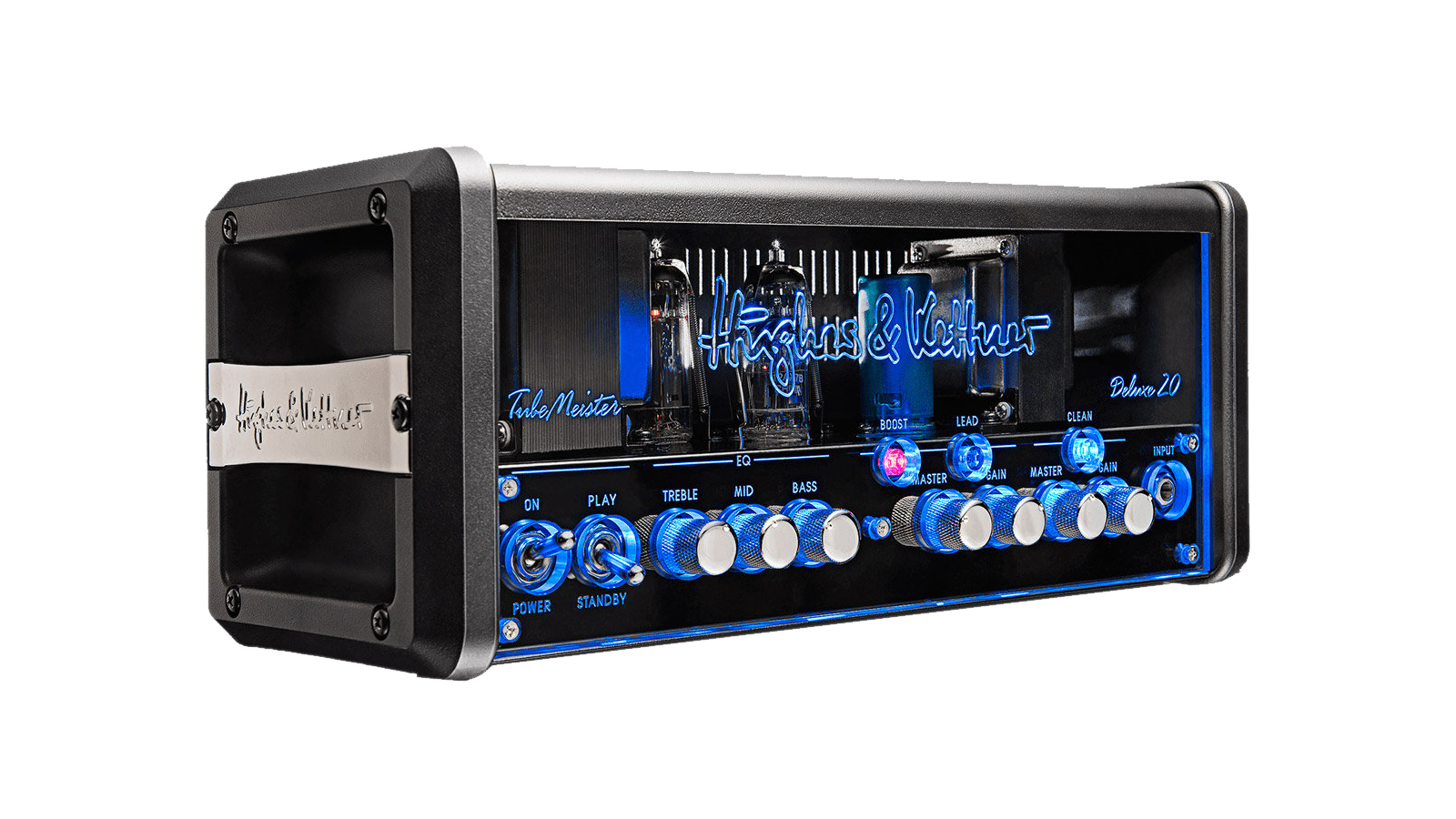
1. Hughes & Kettner TubeMeister Deluxe 20
Our expert review:
Specifications
Reasons to buy
Reasons to avoid
In a world where lunchbox amps are perceived to be little more than glorified fuzz boxes, the Hughes & Kettner TubeMeister Deluxe 20 will probably be an eye-opener for a lot of people. From the get-go, everything about this lunchbox amp is in line with the H&K name, not least the blue-glowing Plexiglas control panel. Aesthetics aside – which in H&K’s case are utterly divisive – it’s the versatility of this lunchbox amp that should be the main talking point.
Taking its tonal cues from H&K’s flagship TriAmp Mark 3, the TubeMeister Deluxe 20 can bring the crushing high gain that lower-watt tube amps are notorious for, but it also manages to offer the pristine clean tones that this style of amp isn’t traditionally known for. With a three-band EQ and two channels – a clean and a lead, plus a boost option that actually feels like a third channel – the TubeMeister Deluxe 20 offers guitarists a lot of tonal control. Adding to this is the adjustable output, which enables you to operate the amp at 20, 5, 1 or even a totally silent 0W.
On that note, what really sets this lunchbox amp apart is its built-in Red Box AE (Ambience Emulation) feature. H&K’s acclaimed cabinet simulator, it gives users the opportunity to record directly from the amp or even plug straight into a house PA for live performances. This 11lb/5kg box could feasibly make up the bulk of your live rig, proving you can still get great tone without breaking your back.
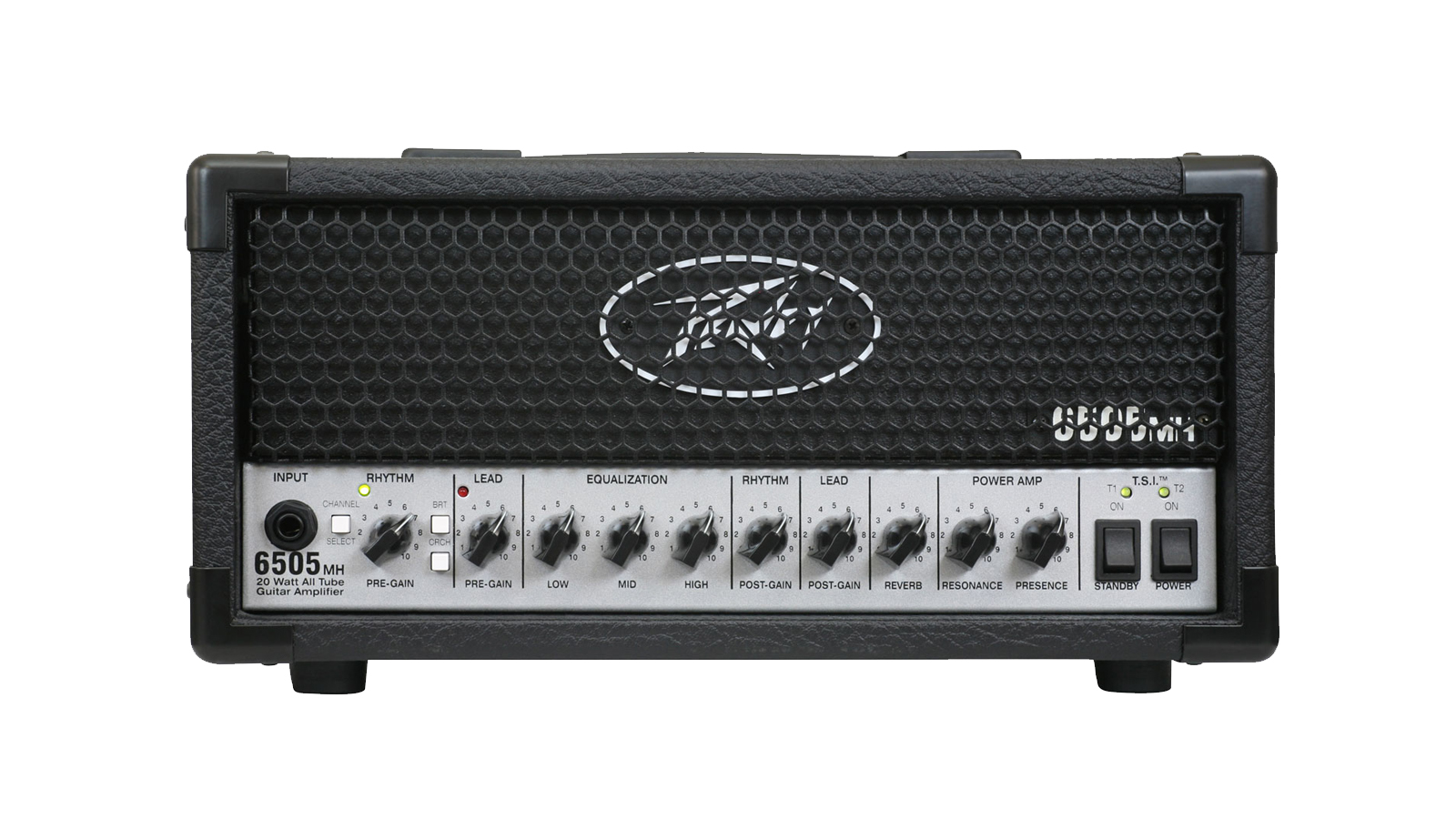
2. Peavey 6505 MH
Our expert review:
Specifications
Reasons to buy
Reasons to avoid
A miniature version of the highly acclaimed 6505, the MH has an awful lot to live up to. Thankfully, it doesn’t disappoint. Like its bigger brother, this lunchbox amp can be a bit of an acquired taste, but if you’re chasing low-end-heavy, highly saturated riffage, it can’t be topped.
At the same time, thanks to its clean channel – known here as a rhythm channel – getting a great-sounding clean is not only possible but actually pretty simple to dial in. In fact, there’s a lot of scope to this rhythm channel, and with the gain down you could use it to play everything from indie to blues. Add just a hint of gain and you’re approaching hard rock territory.
Of course, it’s earth-shattering distortion that Peavey is known for, and this lunchbox amp can do that just as well as the 100W version, albeit with less headroom. At 20W, the 6505 MH will hold its own for you in the live environment, and with adjustable lower outputs of 5W and 1W it’s arguably a more practical amp than its big brother – especially if we’re talking about transportability. A lightweight amp in the hand, but not at heart.
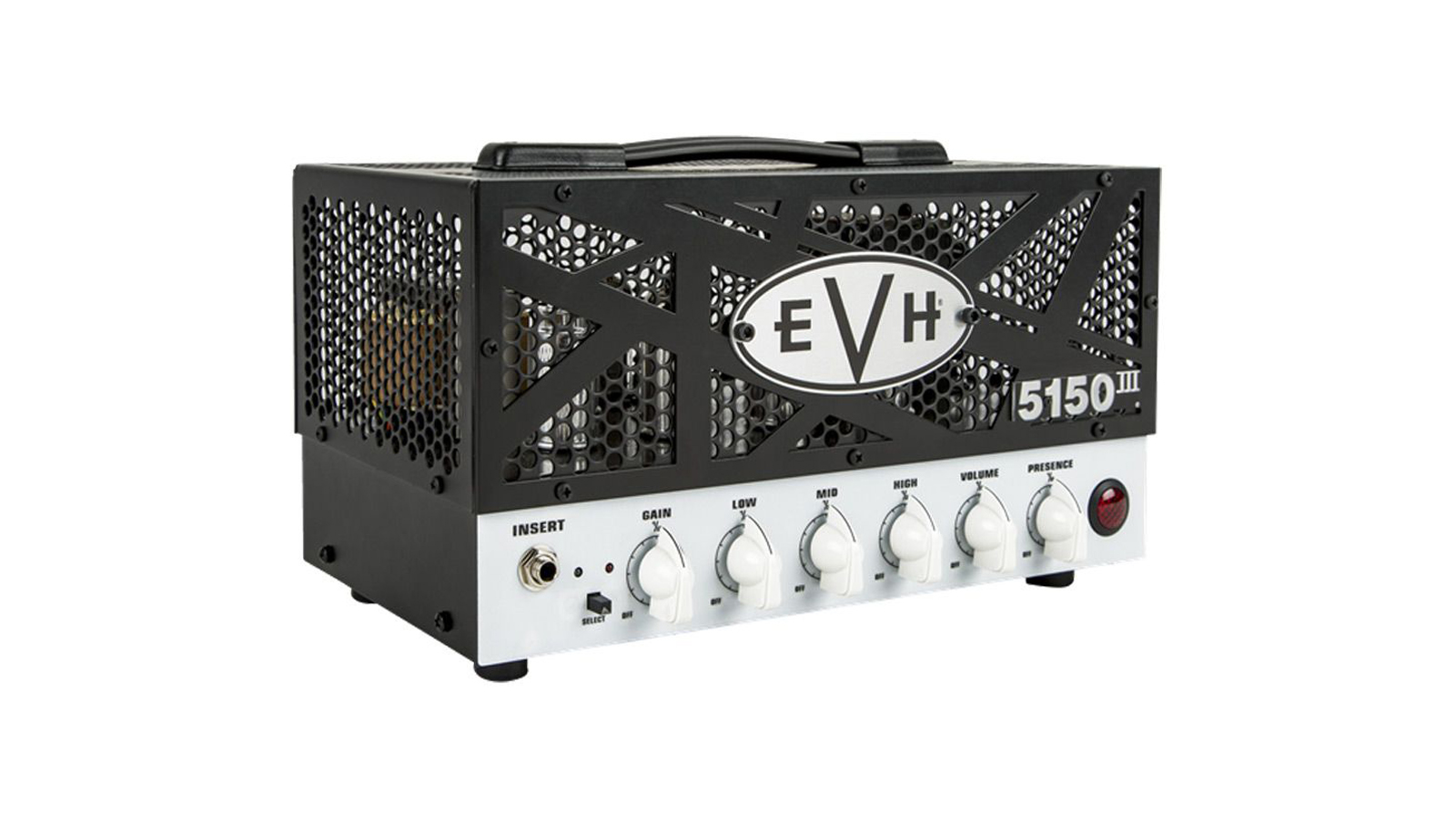
3. EVH 5150III LBXII
Our expert review:
Specifications
Reasons to buy
Reasons to avoid
Some people would have you believe that both lunchbox-style and 5150 amps are only good for metal. This is not the case, of course, and the EVH 5150III LBXII couldn’t do a better job of proving it. Those familiar with the first LBX model may be skeptical, but the new and improved LBXII is far more than a one-trick pony.
Thanks to the inclusion of a clean channel, the LBXII is capable of a wide range of tones, from snappy cleans to overdriven blues and the high-gain dirt that the 5150 range is so renowned for. A shared four-band EQ paired with channel-dependent gain and volume allows players to experience total control over their tone without overcomplicating it.
Overall, the 5150III LBXII is a well-built, travel-friendly, quality-sounding American-style amp at an accessible price. While it’s capable of great-sounding cleans, it’s still probably most suited to players who are looking for high-gain tones.

4. Mesa Boogie Mini Rectifier 25
Our expert review:
Specifications
Reasons to buy
Reasons to avoid
The Mini Rectifier 25 has so much crammed into its lightweight, 12lb/5.5kg frame, you wonder how Mesa Boogie did it. With two channels and four style modes – clean, pushed, vintage and modern – you know you’ve got an amp that can cover a lot of tonal ground.
It’s this four-mode setting that also saves the Rectifier 25 from being overly complex. From Fender-style tones on ‘clean’ to the metallic punch you’d associate with this brand on ‘modern’, it’s all pretty well there with a flick of a switch. In addition, each channel can be operated at either 10 or 25W, while a four-band EQ gives you ultimate control of your tone.
While the Rectifier is one of the most sophisticated and impressive lunchbox amps out there, at over $1,200 it’s a huge investment and probably one that most guitarists won’t be able to justify. At this price, a built-in reverb is sorely missing, especially as it would’ve added a lot to settings such as clean and pushed. However, you get the feeling that there just wasn’t the room for another thing here.
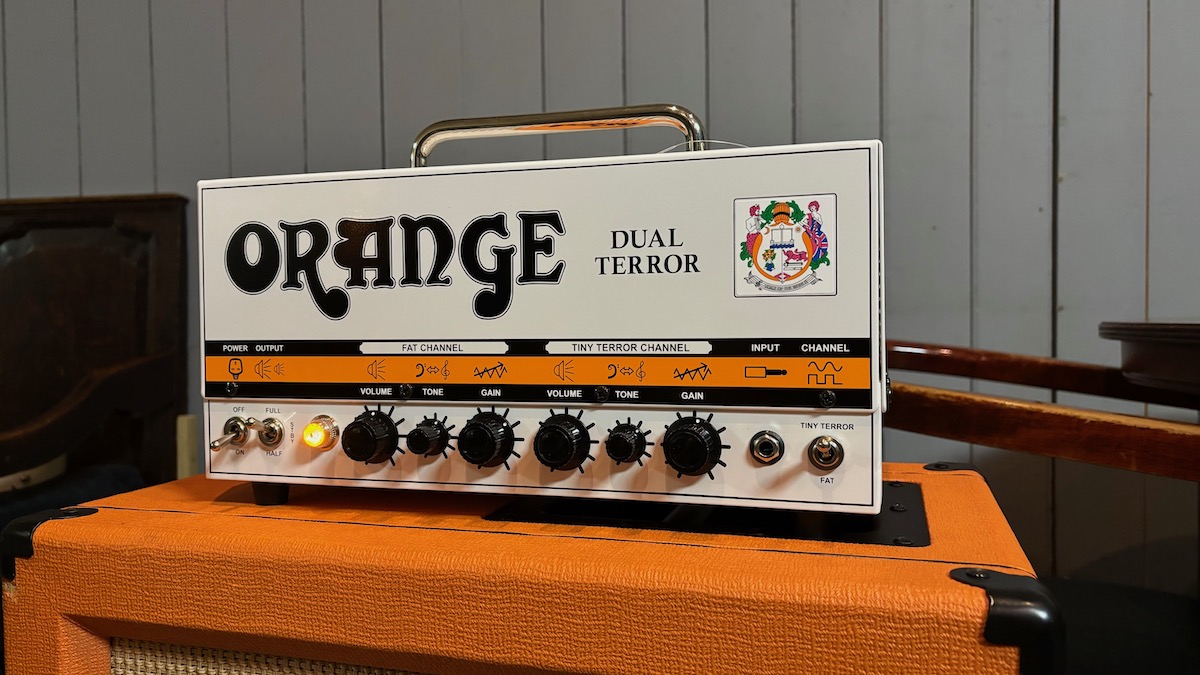
Specifications
Reasons to buy
Reasons to avoid
Though not as widely known as its smaller siblings – the Tiny Terror and the Micro Terror – the Dual Terror is easily the most complete package when it comes to Orange’s lunchbox amp line. At 30W, not only does it offer more headroom than its 15W and 20W counterparts, Dual Terror users effectively get a two-in-one deal thanks to its Tiny Terror channel.
That’s not to say the Dual Terror is simply a Tiny Terror-plus, though. While it bears a lot of tonal and visual similarities to the Tiny and Micro, the Dual is a much more versatile beast. Largely thanks to that extra headroom, it’s more than just a gain machine and is just as capable of nice, chiming indie-clean tones as it is dense, dirty sludge. Having that second channel option also gives players an easy way to navigate between these extremes, should that be their wish. While the lack of a three-band EQ may feel tonally restrictive for some players, others will embrace the simplicity and ease of use that comes with a sole tone knob. However, many will agree that Orange is missing a trick by not including an FX loop.
The aforementioned 30W output also makes the Dual Terror one of the most powerful lunchbox amps on the market, and it performs well in most live environments. This comes at a cost, however, and at 22lbs/10kg it must be one of the heaviest lunchboxes out there.
Read our full Orange Dual terror review
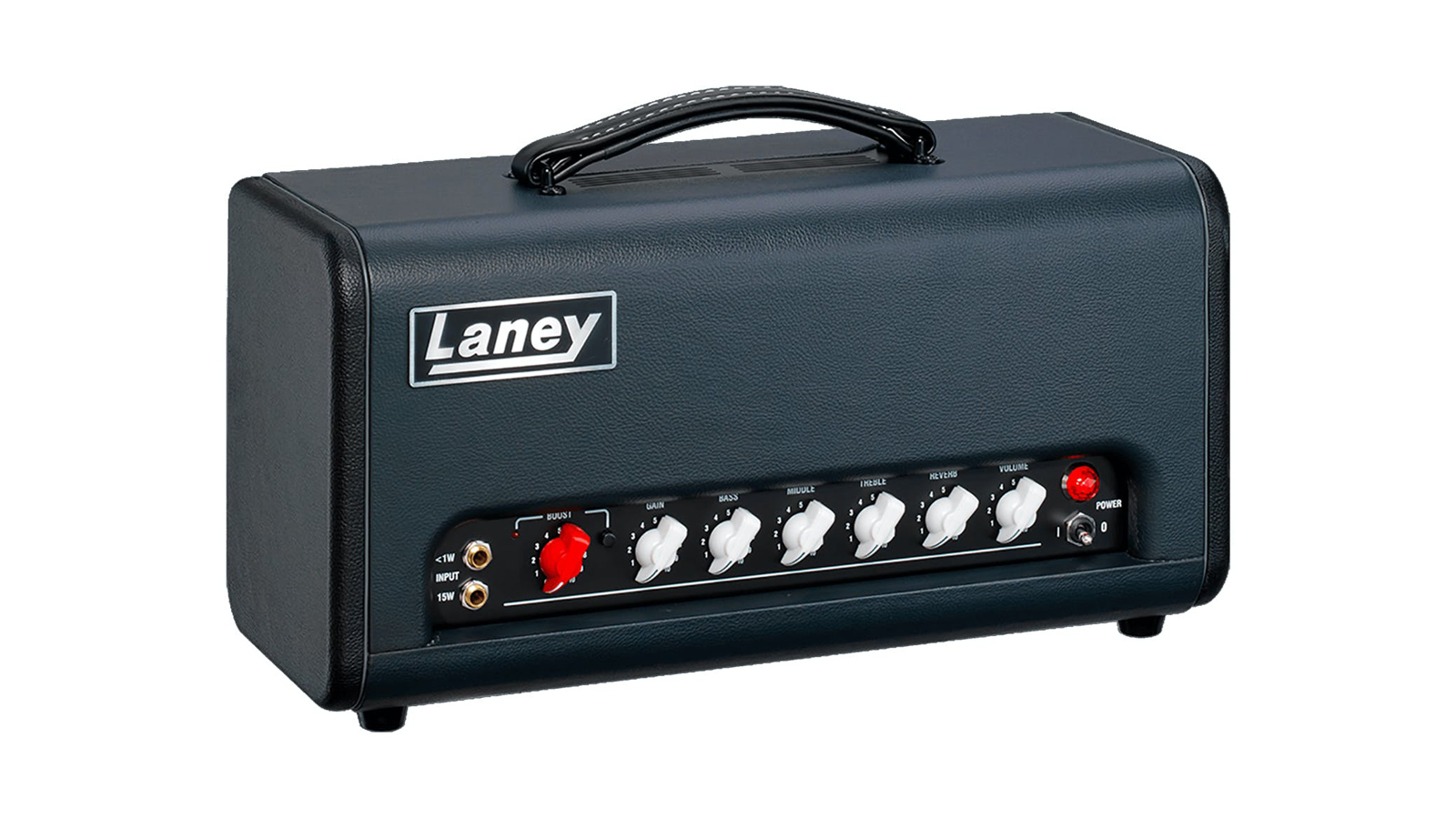
6. Laney CUB-SUPERTOP
Our expert review:
Specifications
Reasons to buy
Reasons to avoid
Want an authentically British-sounding amp? Then look no further than the Laney CUB-SUPERTOP. Laney’s CUB range is all about making boutique amps affordable without too many tonal compromises, and for the most part the manufacturer has managed to do just that.
The SUPERTOP is a powerful 15W lunchbox amp, and though it may look kinda cute, it’s loud enough for even medium-sized gigs. With a built-in digital reverb – the exact one used in the company’s Secret Path pedal – a three-band EQ and an effects loop alongside a wide-ranging gain, the SUPERTOP is good to go as it is, but also quite happy to take your pedals.
It’s most convincing when it’s just slightly breaking up with a whiff of reverb – perfect for blues players. But it’s also capable of producing awesome ’70s-style stadium rock tones. The cleans are less convincing, so if that’s your modus operandi, this lunchbox amp might not quite fulfil your needs, especially as you’ll be working off the one channel. Overall, though, you’ll be hard-pushed to find a better tube amp at this price.
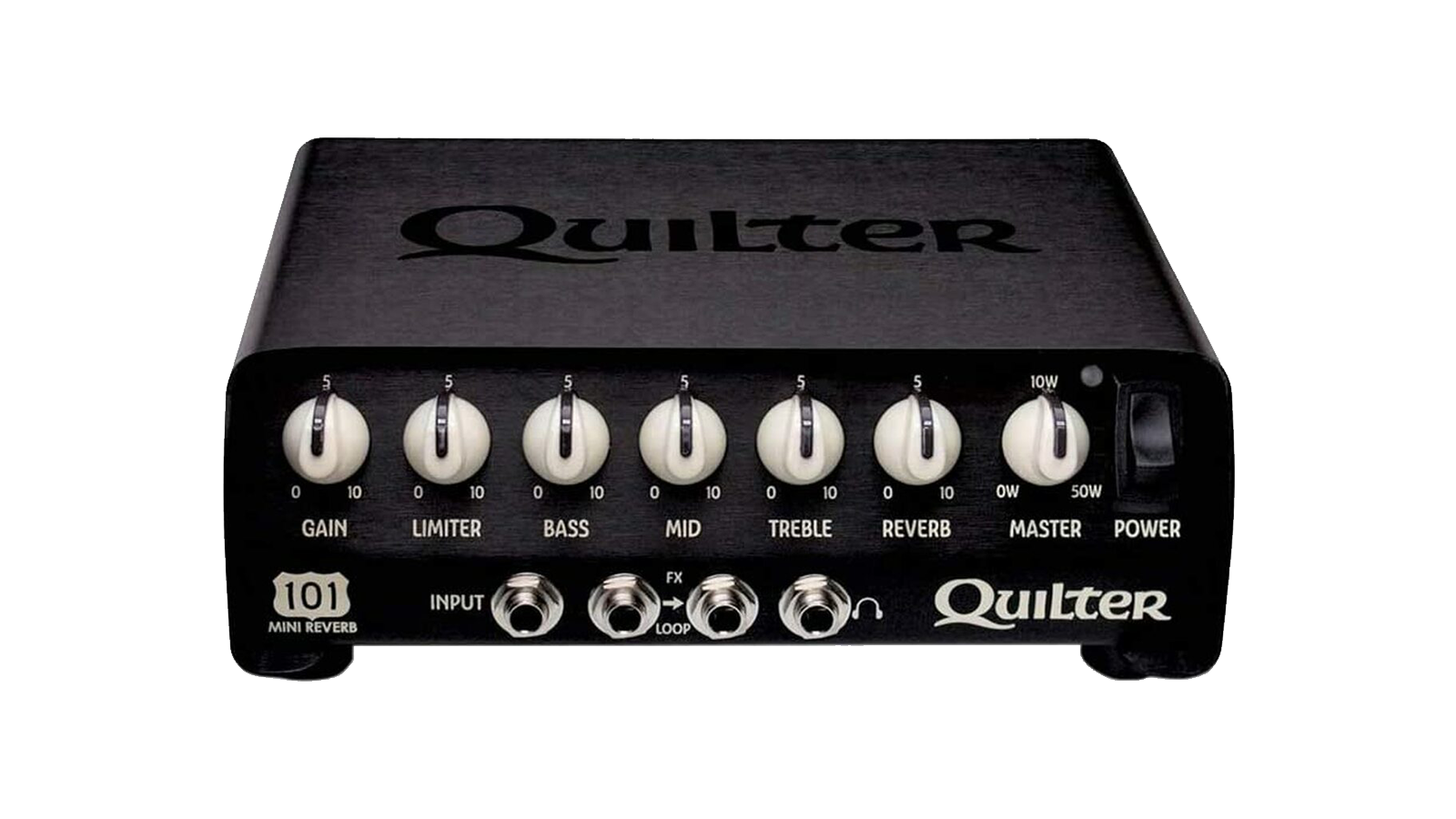
7. Quilter 101 Reverb
Our expert review:
Specifications
Reasons to buy
Reasons to avoid
If you’re looking for true cleans and need something that’s über-lightweight and transportable, then the Quilter 101 Reverb should be yours. At around 2lbs/0.9kg, this is a deceptively powerful little box – small enough to fit in the front pocket of your gig bag.
As a solid-state amp, the Quilter 101 Reverb is also a lot less fragile than your standard valve-driven lunchbox amp, and you won’t have to worry about breaking tubes en route to your next gig. It also means you’ll be getting a lot more headroom, with this unit offering up to 50W of output. The other key selling point here is that the sound is incredibly smooth, offering perfect jazzy clean tones in ways that valve amps on this list just can’t.
At the same time, these amps are probably most suited to clean players and seem to be dialed in for single-coil pickups. If you’re going for big, beefy tones, this probably won’t be the amp for you as the bassiness of humbuckers will probably prove too much and you may find it hard to find an overdriven/distortion sweetspot. However, if that doesn’t apply to you then this could well be a game-changer.
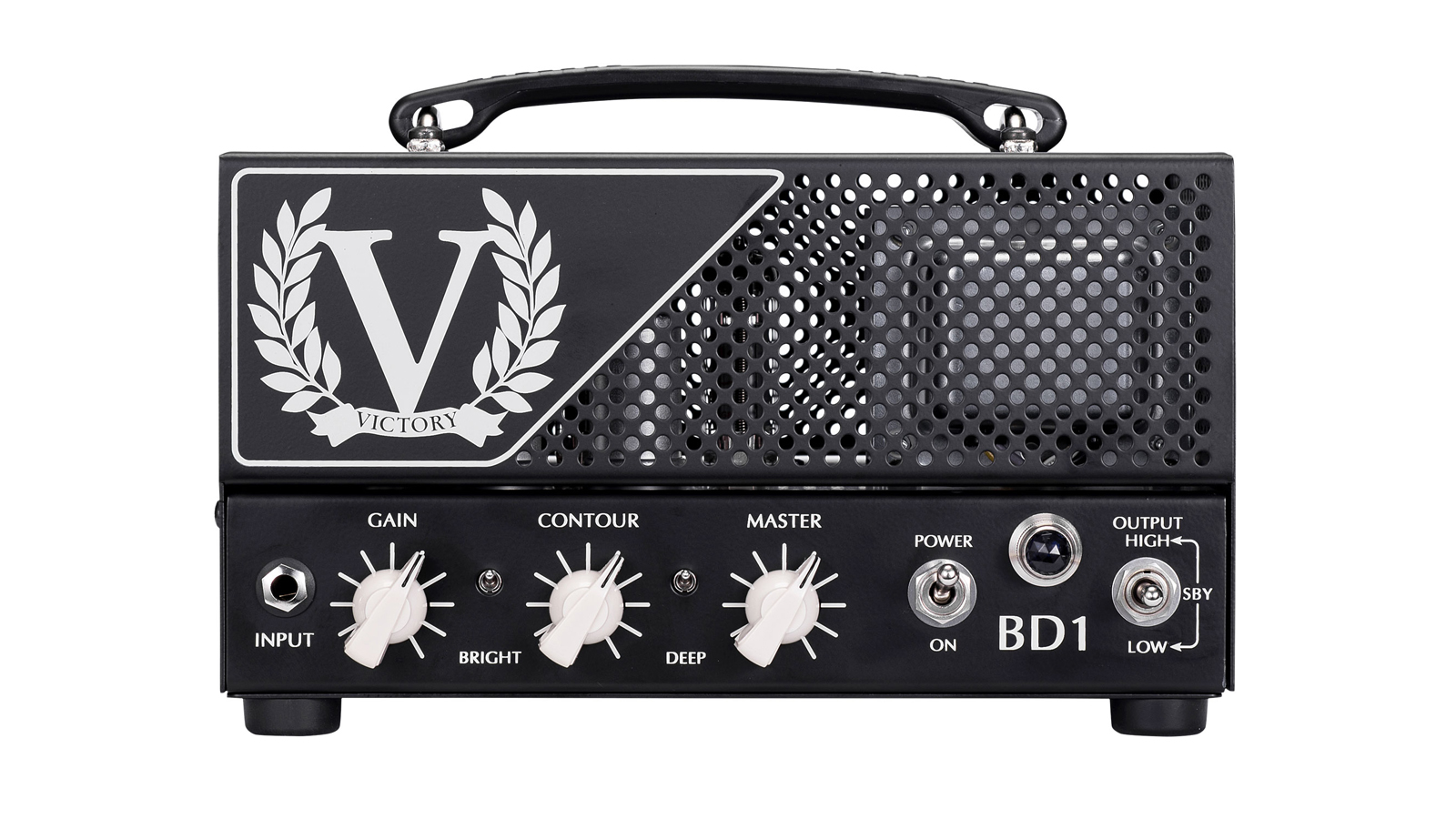
8. Victory BD1
Our expert review:
Specifications
Reasons to buy
Reasons to avoid
If you’re set on having a valve-style amp but need something that can fit easily into your backpack, the Victory BD1 is a great shout. This offering from British amp maker Victory is a more compact version of the company’s Rob Chapman RD1 signature model – featuring the exact same valves and circuit design. With a width of 10.3 inches/261mm and a weight of just 13lbs/6kg, it’s one of the most transportable tube amps on the market.
Despite being one of the smallest valve heads available, the BD1 manages to boast a powerful 28W output; paired with a good-sized cabinet, it’ll do you for most gigs. If that’s more than you need at home, a low output switch allows players to go down to 2W to ensure harmony in the neighbourhood.
The BD1 sounds great, especially for blues and hard rock, but you aren’t going to get convincing cleans with it. It also has only one channel, which dynamic players might find a bit limiting, especially for the price. While this is a quality product that would serve most rock players well, at $900 it’s at the pricier end for this type of amp.
Best lunchbox amps: Buying advice
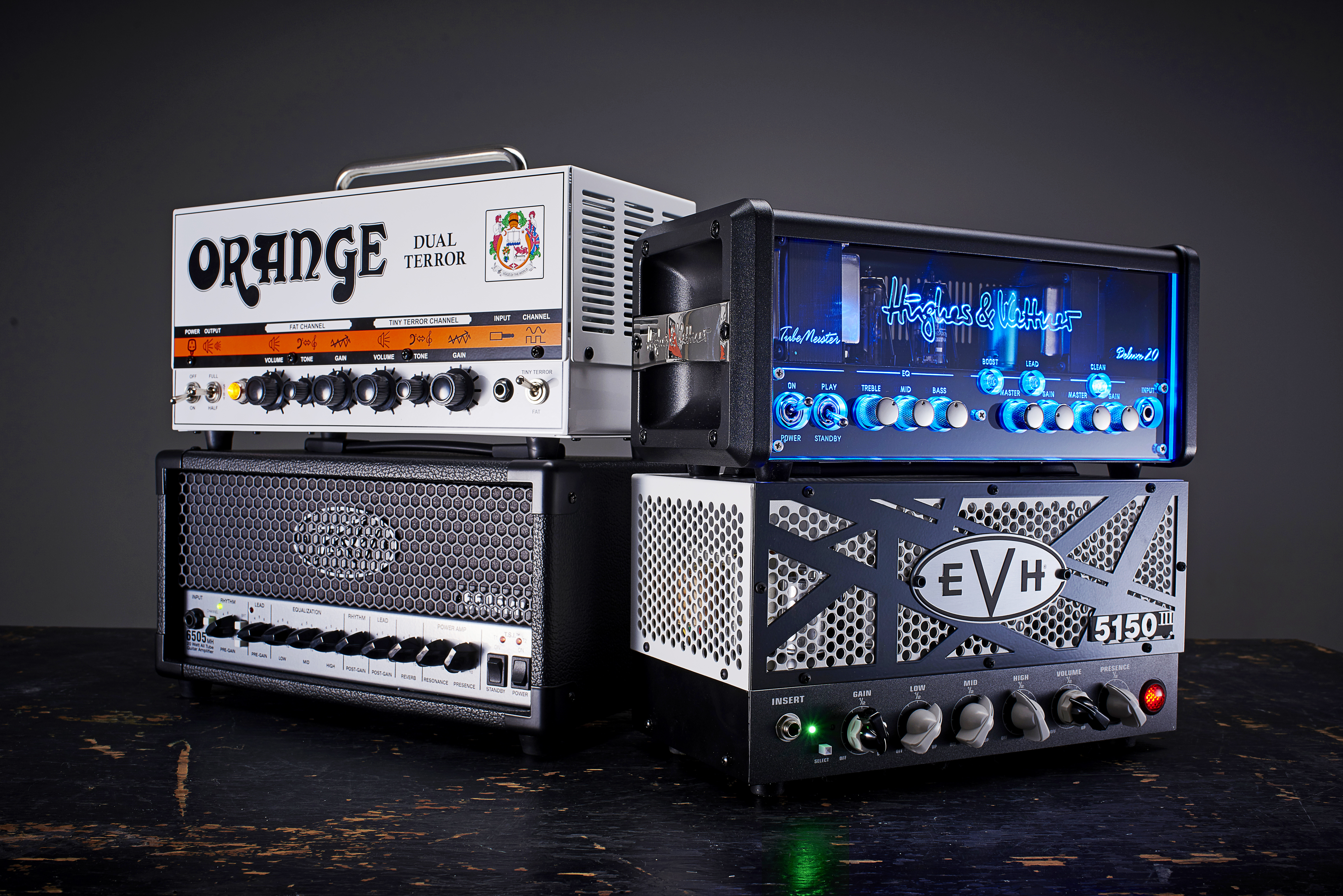
What is a lunchbox amp?
Like every innovation, lunchbox amps are the result of someone believing in a better way. In this case, that ‘better way’ was inspired by every guitar player who’s ever had to transport a 40lb/18kg-plus amp head. Lunchbox amps are compact and streamlined versions of your classic amp heads, in many cases cutting the weight down by more than half. This allows guitarists to lighten their load without compromising their tone. You will also notice that lunchbox amps are generally more affordable than their full-size counterparts, which is another part of their appeal.
As you may have guessed, lunchbox amps are great to gig with. While they usually offer much lower wattage than bigger amps – we’re talking 15W versus 100W in a lot of cases – they still provide enough power for small and medium-sized gigs. (A 100W amp, while sounding great and providing stacks of headroom, is likely to be under-utilized at your average pub gig.) Most lunchboxes are tube-driven, so they sound fantastic when you push them that extra yard – and because they generally offer a much lower wattage, it’s a lot easier to get them to that point. In fact, most professional studios will have lunchbox amps in addition to classic 100W stacks for this very reason. Their high gain potential has also made them popular among metal guitarists, leading to an unfair reputation that that’s all they can do. While some are definitely designed to fulfil this purpose over anything else, lunchbox amps generally offer more versatility than they are known for.
Even if you aren’t all that familiar with lunchbox amps, you’ll definitely recognise some of the most famous names. Orange’s Tiny Terror – the little beast that kickstarted the whole scene back in 2006 – is chief among them, while Victory works almost exclusively in this market.
What to look out for in a lunchbox amp
Before stepping into the lunchbox amp market, you need to consider your priorities. Is weight your biggest concern? Do you need something with a load of features? Is having a low price point the most important thing? Thankfully, there’s a lot of scope in this market and you’ll be able to find a lunchbox amp that meets your needs.
In terms of weight, since there isn’t any strict regulation on what can be classed as a lunchbox amp, you’ll find that they can vary from more than 20lbs/9kg to as low as 2lbs/0.9kg. If you can, try to recreate the weight at home and make a small journey with that in your backpack – or however you’re planning to transport the amp – so that you get a fair idea of how it's going to feel before you buy.
As for features, because lunchbox amps are more streamlined, they will probably have fewer features than you’re used to. It’s not uncommon for them to be single-channel, omitting built-in reverb and in some cases a three-band EQ. Think hard about the tonal versatility you actually need – do you often navigate between clean and dirty playing? Do you prefer pedal over amp reverb? If you can narrow this down, it’ll help to ensure that you don’t pay for something you aren’t going to use.
Find out more about how we make our recommendations and how we test each of the products in our buyer's guides.
Related buyer's guides
You can trust Guitar World
- The best pedal amps, including the top amp simulator pedals
- The best headphones for guitar amps: practice in peace!
- The best modeling amps
- The best amp modelers: hi-tech solutions for every budget
- Best practice amps: hone your guitar or bass chops at home
Get The Pick Newsletter
All the latest guitar news, interviews, lessons, reviews, deals and more, direct to your inbox!
Chris is a contributor to Guitar World and MusicRadar with around 20 years of guitar playing experience – including writing for and recording various projects for around 15 of those. Outside of practical experience, he’s studied music throughout his life, with a particular focus on composition at university. He’s something of a 90s tragic and a sucker for anything with a groovy, metallic edge or psych and stoner vibes. Outside of music, he’s an avid cook, gardener, and rugby league lover.
"I never use my tube amp at home now, because I have a Spark Live": 5 reasons you should be picking up the Positive Grid Spark Live in the massive Guitar Month sale
“Our goal is to stay at the forefront of amplification innovation”: How Seymour Duncan set out to create the ultimate bass amp solution by pushing its PowerStage lineup to greater heights











